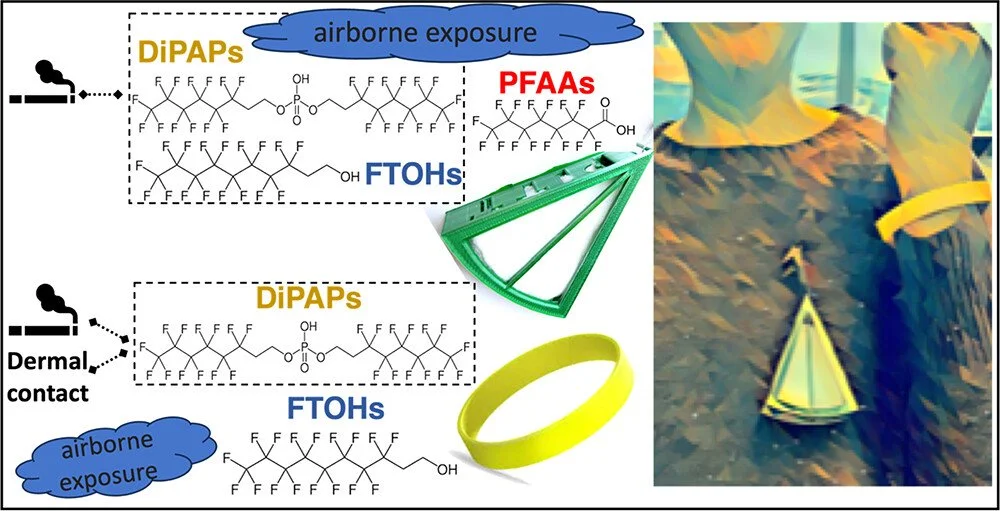Personal Wearable Sampler for Per- and Polyfluoroalkyl Substances Exposure Assessment
Per- and polyfluoroalkyl substances (PFAS) are ubiquitously detected in the environment, raising concerns about human exposure. The assessment of individual exposure to PFAS has been limited due to the lack of specialized sampling tools. Personal wearable samplers, including silicone wristbands, have been used for PFAS exposure assessment. However, translating data into human exposure has been challenging due to the lack of chemical sampling rates by those samplers. We developed and evaluated a personal air wearable sampler (PAWS) using sorbent-impregnated polyurethane foam for its ability to capture diverse PFAS. Simultaneously, we deployed silicone wristbands for comparison. Our results showed that the PAWS effectively captured both ionic and neutral PFAS, while silicone wristbands had relatively limited capacity for perfluorocarboxylic acids (PFCAs). Our observations suggest silicone wristbands may collect polyfluoroalkyl phosphoric acid diesters (diPAPs) through dermal contact, although further investigation is necessary. PFAS concentrations detected in the PAWS can be converted into concentrations in air by using previously established sampling rates, facilitating quantitative inhalation exposure assessment. Smoking status was found to be associated with high diPAP levels in both PAWS and silicone wristbands, although further validation is needed. The PAWS is a promising technology for application in personal exposure assessment for structurally diverse chemicals.

